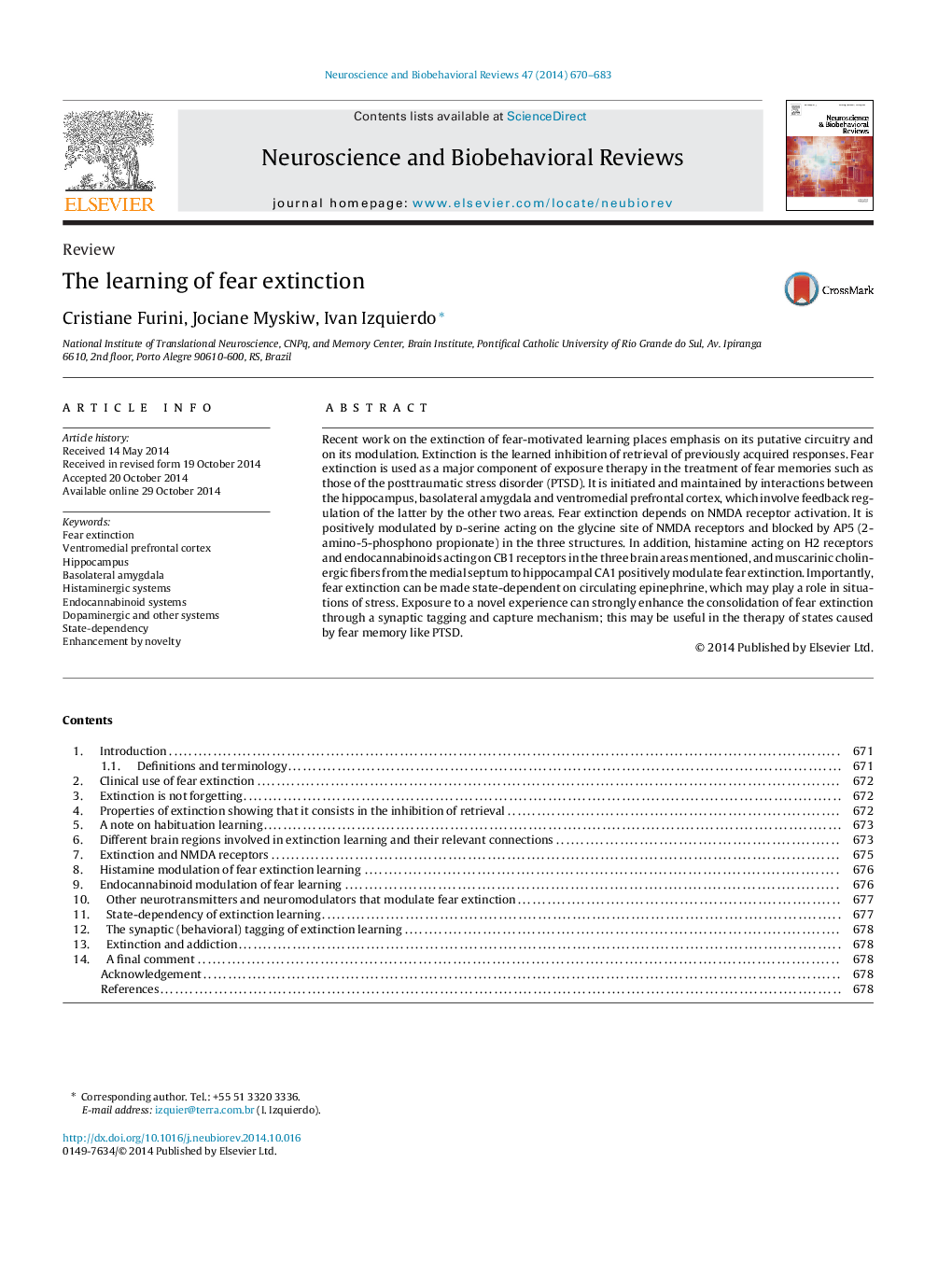| Article ID | Journal | Published Year | Pages | File Type |
|---|---|---|---|---|
| 7303923 | Neuroscience & Biobehavioral Reviews | 2014 | 14 Pages |
Abstract
Recent work on the extinction of fear-motivated learning places emphasis on its putative circuitry and on its modulation. Extinction is the learned inhibition of retrieval of previously acquired responses. Fear extinction is used as a major component of exposure therapy in the treatment of fear memories such as those of the posttraumatic stress disorder (PTSD). It is initiated and maintained by interactions between the hippocampus, basolateral amygdala and ventromedial prefrontal cortex, which involve feedback regulation of the latter by the other two areas. Fear extinction depends on NMDA receptor activation. It is positively modulated by d-serine acting on the glycine site of NMDA receptors and blocked by AP5 (2-amino-5-phosphono propionate) in the three structures. In addition, histamine acting on H2 receptors and endocannabinoids acting on CB1 receptors in the three brain areas mentioned, and muscarinic cholinergic fibers from the medial septum to hippocampal CA1 positively modulate fear extinction. Importantly, fear extinction can be made state-dependent on circulating epinephrine, which may play a role in situations of stress. Exposure to a novel experience can strongly enhance the consolidation of fear extinction through a synaptic tagging and capture mechanism; this may be useful in the therapy of states caused by fear memory like PTSD.
Keywords
Related Topics
Life Sciences
Neuroscience
Behavioral Neuroscience
Authors
Cristiane Furini, Jociane Myskiw, Ivan Izquierdo,
